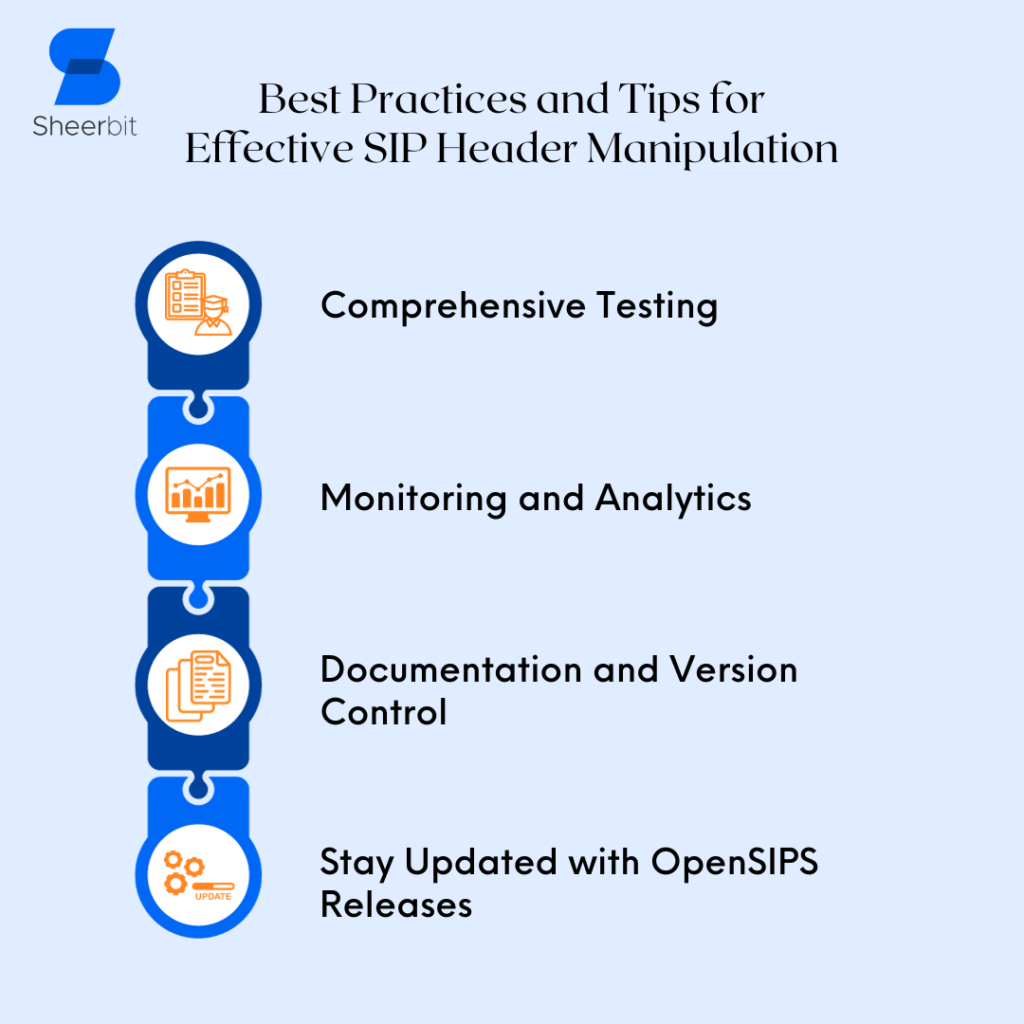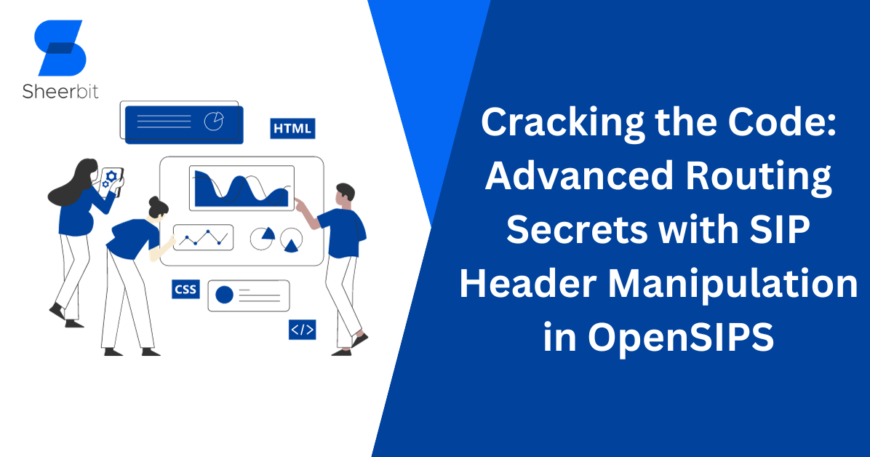In the quickly evolving world of telecommunications today, efficient real-time communication is critical. The SIP provides the foundation for this smooth interaction. Based on the foundation of voice and video communication protocols, SIP is essential for initiating and facilitating sessions between users over the vast internet. From VoIP conversations to video conferencing solutions, its adaptability, and interoperability have made it the preferred choice for many different purposes and services. Robust technologies are becoming increasingly important as the requirement for complex and customized communication networks keeps increasing.
In this domain, OpenSIPS stands out as an open-source SIP server because it provides advanced features that enable administrators to manipulate SIP headers in a nuanced way to optimize routing strategies while also providing the flexibility needed to meet a variety of communication needs. Organizations may increase their real-time communication systems’ overall efficacy and efficiency by utilizing OpenSIPS to unleash a new degree of control and customization over their communication infrastructure.
Understanding SIP Header Manipulation
SIP headers are essential parts of SIP messages that provide vital data that directs these messages’ route and processing. SIP header manipulation is the process of adding to or changing these headers to affect the SIP server’s behavior. A stable framework for modifying these headers is offered by OpenSIPS, which also offers some features that allow SIP message routing to be customized according to specific standards.
Critical Aspects of SIP Header Manipulation in OpenSIPS
1. Header Modification Techniques
OpenSIPS offers an extensive collection of tools for working with SIP headers. Administrators can customize the behavior of SIP messages in some ways, ranging from adding or deleting headers to changing their values. Because of this fine control, complex routing plans tailored to the particular requirements of the communication network may be put into place.
2. Conditional Routing with Header Information
OpenSIPS gives administrators the ability to establish conditional routing rules by utilizing SIP header modification. This implies that the server may use the information included in SIP headers to determine routing. For example, routing choices can be dynamically changed based on the location of the user, the type of device, or even the time of day.
3. Load Balancing and Failover Strategies
OpenSIPS’s ability to manipulate SIP headers makes it easier to create failover and intelligent load-balancing systems. Using header information, administrators may split traffic across several servers and guarantee the best use of available resources. SIP header modification may be used to design failover methods that redirect traffic seamlessly in the event of server failures or network problems.
4. Security Enhancements
Improving the security posture of a communication network also heavily depends on one’s capacity to alter SIP headers. With OpenSIPS, administrators may put security measures like header-based access control into place, blocking unwanted access and reducing possible risks.
Case Studies: Real-world Applications of SIP Header Manipulation in OpenSIPS
1. Global Load Balancing for VoIP Service Providers
Geographic differences and inconsistent server loads are two issues that VoIP service providers with a worldwide presence frequently deal with. SIP header manipulation in OpenSIPS allows providers to use global load balancing tactics, such as routing calls to the closest server based on geolocation data included in SIP headers.
2. Dynamic Routing Based on User Preferences
SIP header modification can be used to customize routing decisions in situations where user preferences are essential factors in call routing. Users could, for example, want to connect to servers that are situated in particular areas or data centers. Administrators can build dynamic routing that complies with these preferences by manipulating SIP headers using OpenSIPS.
3. Securing SIP Infrastructure with Header-Based Access Control
One of the main concerns with SIP architecture is security. Access restrictions based on header information can be enforced using OpenSIPS’s SIP header manipulation feature. Administrators can strengthen the overall security posture by limiting access to and interaction. With the SIP server to only authorized entities through header validation and filtering.

Best Practices and Tips for Effective SIP Header Manipulation
1. Comprehensive Testing
It is essential to carry out extensive testing before implementing any SIP header alteration rules in a production environment. This involves running some simulations to make sure that the manipulation rules work as planned and don’t have any unexpected consequences.
2. Monitoring and Analytics
Putting robust analytics and monitoring systems in place is crucial to understanding the effects of SIP header modification. Administrators may optimize their SIP header manipulation tactics with the use of real-time statistics on call quality, server performance, and routing decisions.
3. Documentation and Version Control
It is essential to keep thorough documentation since SIP header modification rules are complicated. Moreover, SIP header manipulation configuration changes may be recorded, undone if needed, and cooperatively managed with the help of version control systems.
4. Stay Updated with OpenSIPS Releases
OpenSIPS is an open-source project constantly developing, with new versions bringing improved features and functionalities. Keeping current with the most recent versions and upgrades guarantees that administrators can use the most sophisticated SIP header modification features.
Conclusion
For administrators looking to improve security, optimize routing techniques, and build dynamic communication networks, SIP header modification is a handy tool in the OpenSIPS space. Many options, such as load balancing and failover techniques, as well as dynamic routing based on user preferences, become possible when SIP message behavior can be tailored based on header information.
The ability to manipulate SIP headers in OpenSIPS is becoming increasingly important for administrators and developers. As communication networks continue to change. Through a comprehensive grasp of header manipulation and the adoption of optimal methodologies, establishments may fully unleash the capabilities of OpenSIPS. Therefore establishing communication infrastructures that are safe, dependable, and efficient.
Are you prepared to advance your knowledge of OpenSIPS? Unleash the full power of your communication network by delving further into the realm of SIP header modification. Whether you’re a novice or an experienced administrator, staying ahead in the ever-changing telecom industry requires constant learning.
Investigate the OpenSIPS documentation, participate in community discussions, and try out SIP header modification in a safe setting. With the sophisticated routing secrets of SIP header modification in OpenSIPS. You may strengthen your communication infrastructure and maintain your curiosity and knowledge.
Are you prepared to discuss your experiences or ask inquiries regarding manipulating SIP headers? Please make contact with our global specialists and enthusiasts. Let’s work together to break the code and discover all of OpenSIPS’s limitless potential.





